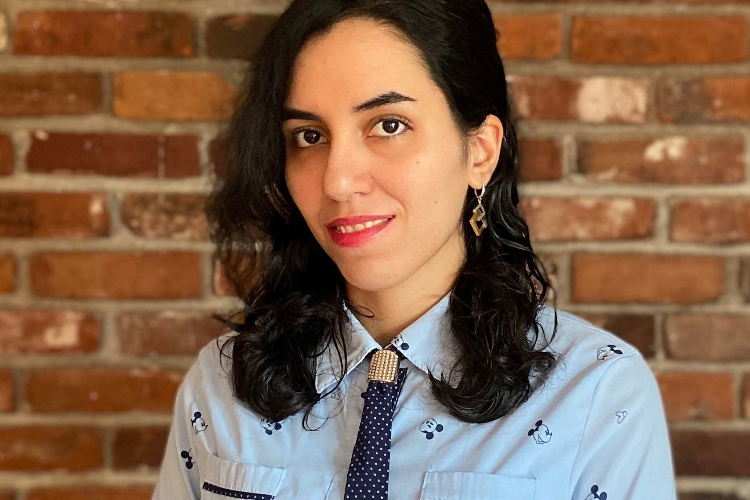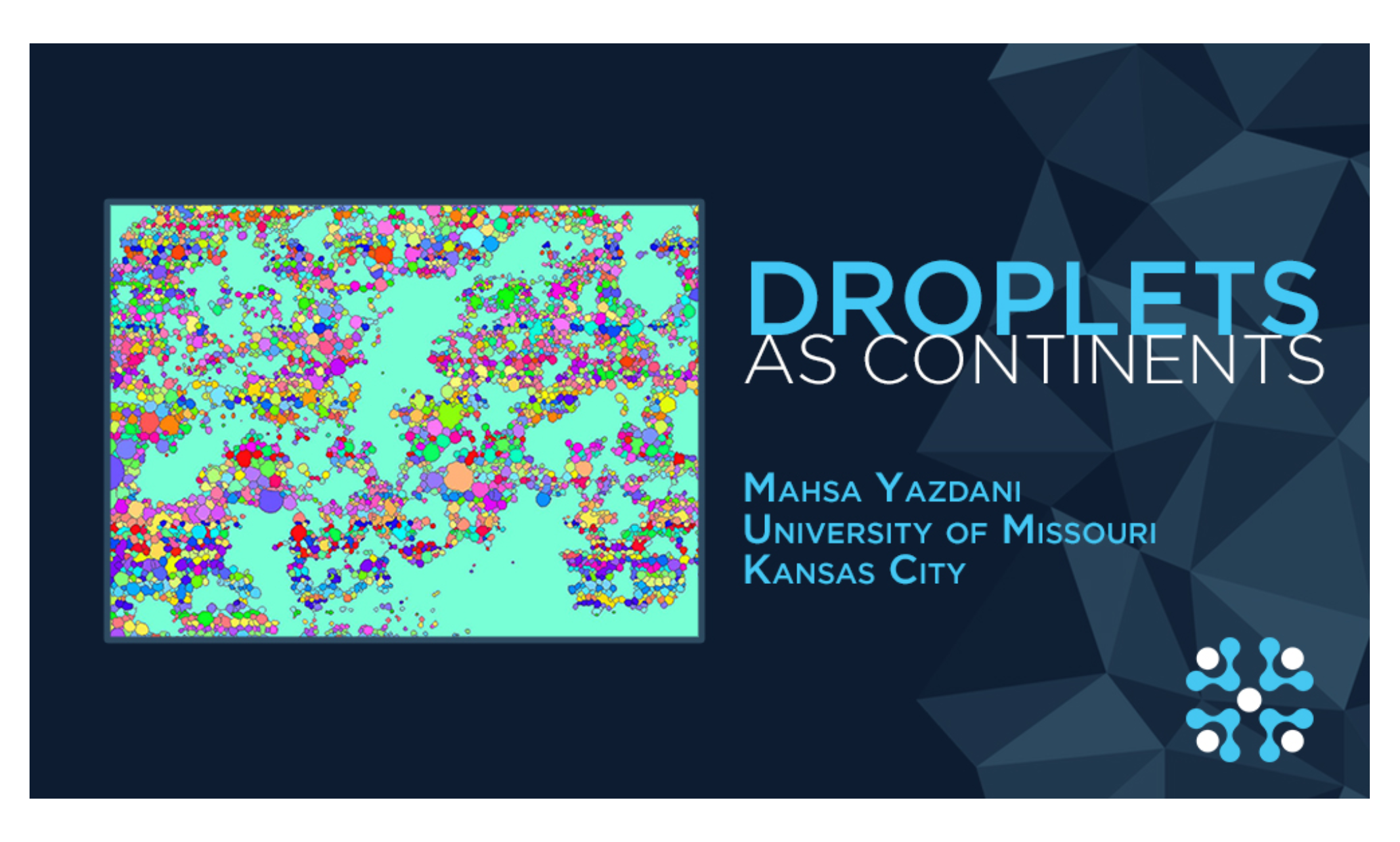Many of us don’t often view science as art. When we think of art, we see something abstract, something, maybe, with pretty colors, that's nice to look at or think about. That was until the introduction of arts into science, technology, engineering and math fields – STEAM.
Mechanical engineering doctoral student Mahsa Yazdani created an artistic digital imaging piece from her research that landed among the 12 featured visual works currently up for sale in the annual BioNexus KC Science2Art auction.
Science2Art is a platform for regional scientists to display and describe their research through the visual arts. Each of the images tells a personal research story and poetically captures the fieldwork performed by the scientists and their teams. Yazdani, under the direction of assistant professor Zahra Niroobakhsh, Ph.D., is part of a research team studying if non-toxic food-grade surfactants can be used to prevent environmental damage as a result of crude-oil spills.
As the only UMKC student to have their work included in the BioNexus KC art auction, Yazdani shared the inspiration behind her artwork, background on her research and the importance of incorporating art into science.
What influenced your interest in engineering?
I became interested in engineering while I was working on an application of engineering in biology. I noticed a combination of engineering and biology could affect human life in various ways, specifically by advancing our understanding of the environment and health.
What are your primary areas of research?
In addition to optimizing emulsions for oil spill remediation, I’m working on creating biomembranes using biocompatible surfactants through microfluidic systems for pharmaceutical applications.
How has UMKC helped to inspire and influence your research?
UMKC resources are key to my ability to continue several unique projects. Not only does UMKC give me access to other researchers’ scholarly work, but it also allows me to become acquainted with esteemed scientists who inspire me throughout my projects.

What do you hope to do with your degree when you graduate?
I am an interdisciplinary Ph.D. studying mechanical engineering and pharmaceutical sciences. I have always been interested in research – and becoming an effective researcher – learning new things and investigating. Walking on the edge of science fulfills my passion for solving problems to advance human health.
Why is it important to incorporate art into science?
I think art functions as a medium to expose people to the amazing, beautiful aspects of engineering. Without that exposure, everyone might not fully grasp how bold and astonishing science really is.
Droplets as Continents. Is this work based on an ongoing project?
“Droplet as Continents” is currently an ongoing project, and we are still working on that in the PRISM (Printing and Rheology of Interfacial Soft Materials) research group under the supervision of Dr. Zahra Niroobakhsh.
What is the inspiration behind your art?
When the BP oil spill happened in 2010, a large amount of crude oil leaked into the Gulf of Mexico. Several previous studies investigated the effects of this using various toxic surfactants to solve the problem. We are studying the effects of non-toxic surfactants on oil spill remediation. Droplets as Continents is a post-processing image from our preliminary studies, which displays several droplets covered with water in a similar way that continents are separated with water on the surface of the earth.
What are you learning from your research?
It has been documented that toxic surfactants have been used to amend oil slicks floating on the surface of the water during clean-up activities following an oil spill. As a member of the niROO PRISM Lab supervised by Dr. Niroobakhsh, I am studying the effectiveness of non-toxic food-grade surfactants to improve the effects of a similar environmental disaster. So far, we’ve done several preliminarily studies and hopefully, these non-toxic surfactants are just as effective as toxic ones, only without resulting in additional damage to the environment.
You are the first student to have their art included in the Science2Art auction. What does that mean for you?
I feel honored to have this special opportunity, and I’m glad that this platform helped me to contribute to fundraising for STEM education in Kansas City.
The current bid for Droplets as Continents is $350 on the BioNexus KC website. Images included in Science2Art were submitted by scientists from Columbia, Missouri, to Manhattan, Kansas. All proceeds from the Science2Art auction will be donated to STEAM education in KC.

